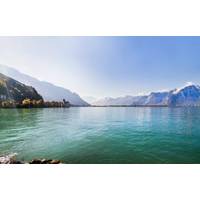
Plastic Levels in Lake Geneva as High as World's Oceans
in the world's oceans. They have even been found in the blood samples of unborn babies and scientists are trying to understand the health risks of the phenomenon for people and animals.Hagmann said he was worried that rising plastic consumption over time will lead to more litter ending up in water systems. "We are seeing the growth curve rise very quickly. Projections are pessimistic if we do nothing," he said, although he acknowledged that at least awareness of the issue was growing. "When we began working on this 12 years ago and talked about plastic fragments in water, people
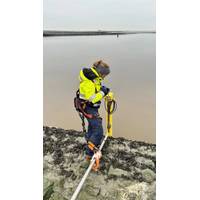
MacArtney Operates Water Quality Measurements at the River Eider
intervals are every 5 minutes) of these parameters at the River Eider.The data will help set up and calibrate models for river basin and hydro-engineering system analysis, as well as a forecast model for the River Eider.The project “Zukunft Eider” deals with the changes in the water systems of the River Eider and River Treene, e.g. with regards to sediment input at the tidal areas of the River Eider, that have been observed over several decades.These changes have induced a decrease in vertical profiles and natural slopes, resulting in strong effects on drainage and flood protection
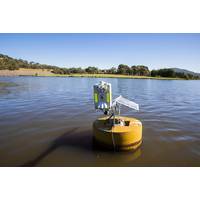
CSIRO Aims to Create a 'Weather Service' for Water Quality
bays, coastal wetlands, aquaculture farming, mangrove forests and coral reefs, including the Great Barrier Reef.SmartSat CRC Chief Executive Officer, Andy Koronios, said that space technology will be a key aspect of AquaWatch and essential to developing an accurate understanding of Australia’s water systems."As the AquaWatch foundational partner, SmartSat’s collaboration with CSIRO has established a number of key pilot projects aimed at developing technologies to effectively monitor and manage this essential resource,” Professor Koronios said.“The initial suite of co-operative
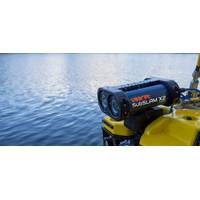
Vaarst Launches SubSLAM X2 in US Subsea Market
video imagery and other 3D modelling systems. SubSLAM is touted as a real-time intelligent data collection system delivering 4K resolution video with simultaneous high-quality live 3D dense point clouds at sub-millimeter accuracy. Five SubSLAM systems are being introduced to the US, two deep water systems which can operate in depths down to 2000m and three systems which will operate in shallower waters down to 300m. A 6000m capable system is expected to be available from Q3 2023.Mounted on any ROV carrying out a visual inspection, SubSLAM can record all data in a single flight. Equipped
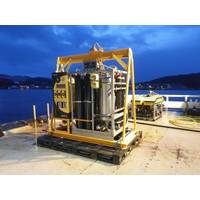
Putting Power on the Seafloor is a Fuel Cell Future
recharging the battery in a way that limits switching the fuel cell on and off too much (something that’s not great for them).The next steps are to look to use the new system as part of a series of robotic monitoring projects in the coming years. “The new energy supply for under water systems creates completely new possibilities for us to use the devices over longer periods of time”, concludes Dr Flögel.View inside the fuel cell containment. Photo: Finn K. Flögel.Teledyne tests its SuperchargerOver in Norway, working with Innova, Teledyne has put its Subsea Supercharger
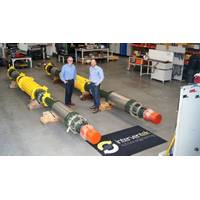
Interventek Launches Revolution-7 Subsea Landing String
and operational efficiency for the wider industry.“Our technology is modular and universal, allowing it to be scaled up or down in its configuration and capability, and integrated with other third-party equipment. We can offer simplified landing string systems, spanner joint systems, ultra-deep water systems and high-pressure, high-temperature systems depending on the field application.”For subsea well completion, intervention, workover or decommissioning operations, a landing string is deployed from a floating vessel, via a marine riser, to enable safe and environmentally secure operations
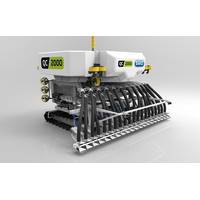
SMD Unveils Deep Water Nodule Collector
SMD said it has developed a new nodule collection solution engineered to maximize productivity and minimize impact to the seabed and the surrounding environment.The QC2000 Nodule Collector concept is based on SMD’s 50 years of experience in how to cut, move and collect soils, combined with deep water systems expertise, the company said.With a least impact philosophy, vessel productivity up to 1000Te per hour is achievable. The patent pending collection technique and process form a unique, energy efficient solution which has minimal impact on the seabed and surrounding environment, SMD said.Graeme

VIDEO Interview: Subsea Europe Services: Driving the ‘Survey System-as-a-Service’ Business Model
new business models for us and lead to a disruption of existing value chains.It is a fascinating ‘push and pull.’ As technology has evolved, it seems to a degree that hydrographic survey has become somewhat commoditized. How do you see it?Well, especially in shallow water. With shallow water systems the technological differences between the different multibeam systems available on the market are rather small. So selecting a suitable system for the job has become more like a some kind of a passion statement rather than a fact-based decision. Now, this commoditization is in fact also enabling
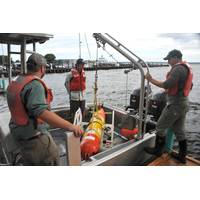
AUV Mission in the Great Lakes
carbon, so that helps us understand the role of climate,” Warner said. “Ultimately, this multi-tool approach to this kind of research is critically important and has been shown to be really effective in oceans, but hasn’t been used to as much degree in the Great Lakes or other fresh water systems.” The research team is now in the early stages of data analysis which will ultimately lead to a number of papers in 2017. As for future AUV deployments in the Great Lakes, “We don’t have solid plans [at this point],” Warner said. “We would like


 February 2024
February 2024





